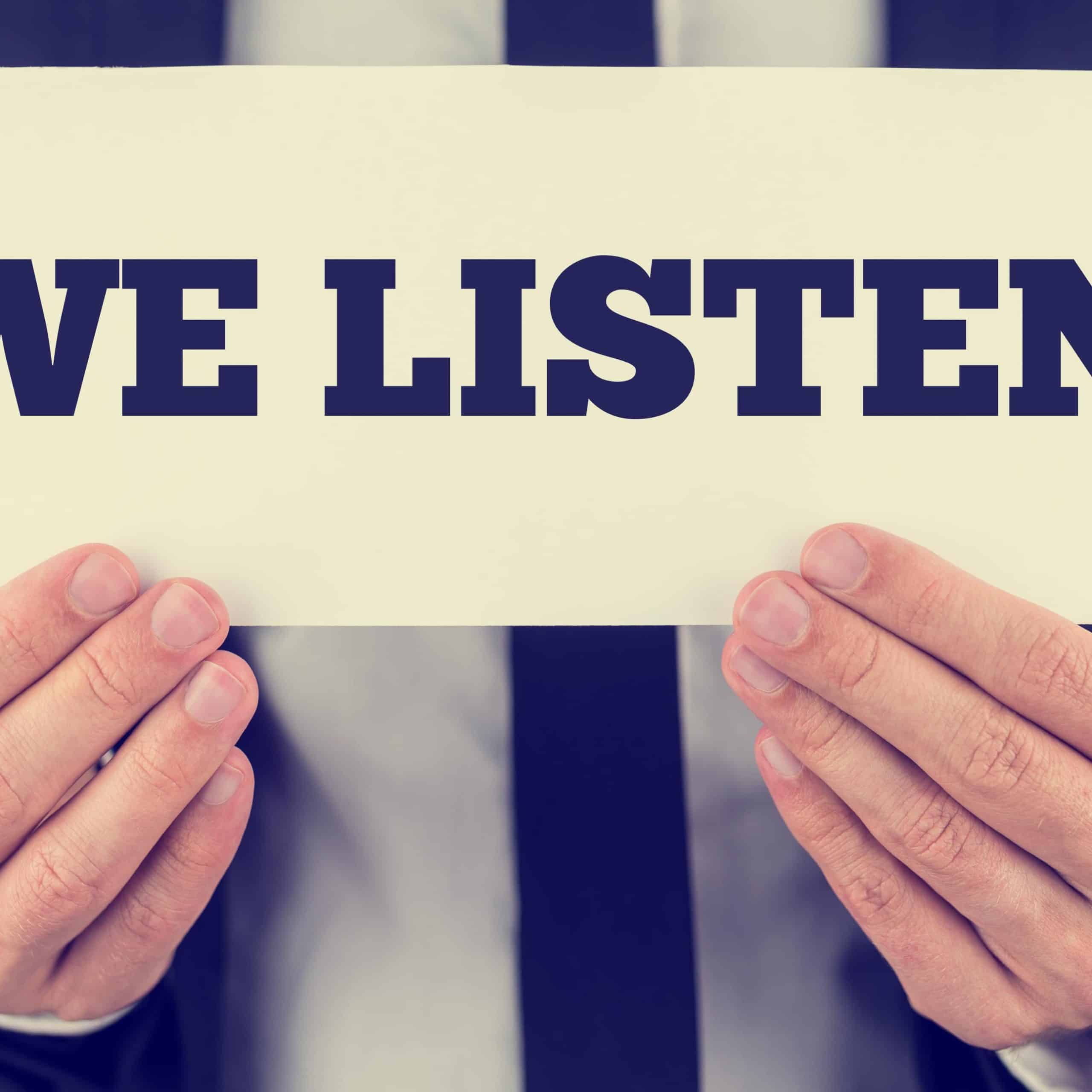You think you are listening right, they are talking – you are watching their lips move – you are hearing them aren’t you?
Well actually you are likely to be hearing what you want to hear. We presume an incredible amount.
Take someone with you to a client and compare notes. You might be surprised at the how different your notes are.
- Be present and focused in the moment
Know that you are probably stacking the odds against you by going in armed with history – I say do enough research to show you know a summary of their history – but mentally leave it at the door – it’s just that – history and it’s this (along with notes on file about the client) which stack against you as you will be listening to evidence that they are still looking for the same solution. (Or have the same problem). You will be deleting anything to the contrary. Be present by being fully present and that means LOOK at what’s happening (or listen in on the phone). Observe the scene from a third place – mentally envision yourself watching the conversation (unless you can double yourself and float – in which case get in contact!)
- Draw on your listening skills. Stop talking!
Ask (relevant, meaningful) questions; have them prepared so that you don’t waste valuable time mentally disengaging from what they are saying to compile your next question.
Stop talking. Start really listening.
- Demonstrate active listening.
Check with them that you have heard correctly by repeating back, in THEIR language, what they have said and clarify you understand what they mean. Don’t go off on your own tangent of what the answer they gave you means to you. It’s in their language, at this stage keep to that. Think about when someone repeats your phone number back in a different ‘chunk’ than from what you do. It’s just off-putting.
- Study verbal and non verbal communication
Communication is 7% words, 38% voice, 55% body language. That’s a high 93% of communication that is non-words. Hence we always say – when you can, get IN FRONT OF THE CLIENT– but make a meeting worth their while. It will backfire if it’s not relevant or useful to them.
- Clarify and question
And to wrap up, clarify the big picture and their needs, then simplify your solution so that it leaves little room for presumption from their end. Listening is two way – one, you are listening and you are trying not to assume what they are saying and two, when they are listening – you don’t want them to presume your solution.
Conclude by asking where they want to take it. This is culture sensitive so in all cases adapt your style in accordance to the client; in Australia and UK this method of asking ‘what are the next steps’ works well due to a stereotype mistrust and perceived control of the sales person. Asking the client what they want to do next is the opposite of that usual ‘corner them/direct them’ and builds trust as well as informs you of a next move that may be better then the one you were going to suggest!





